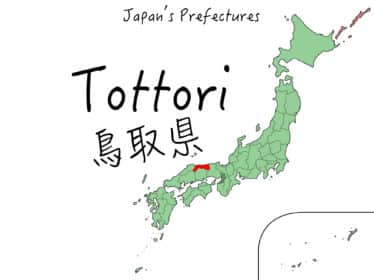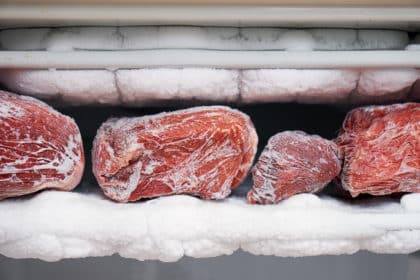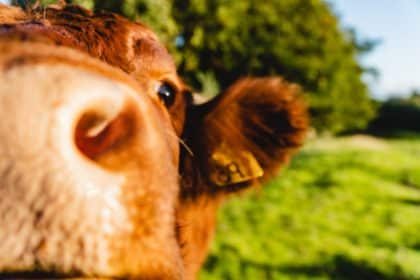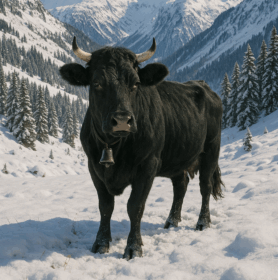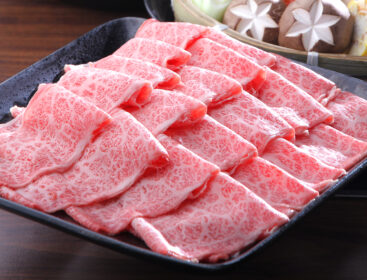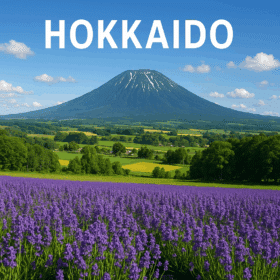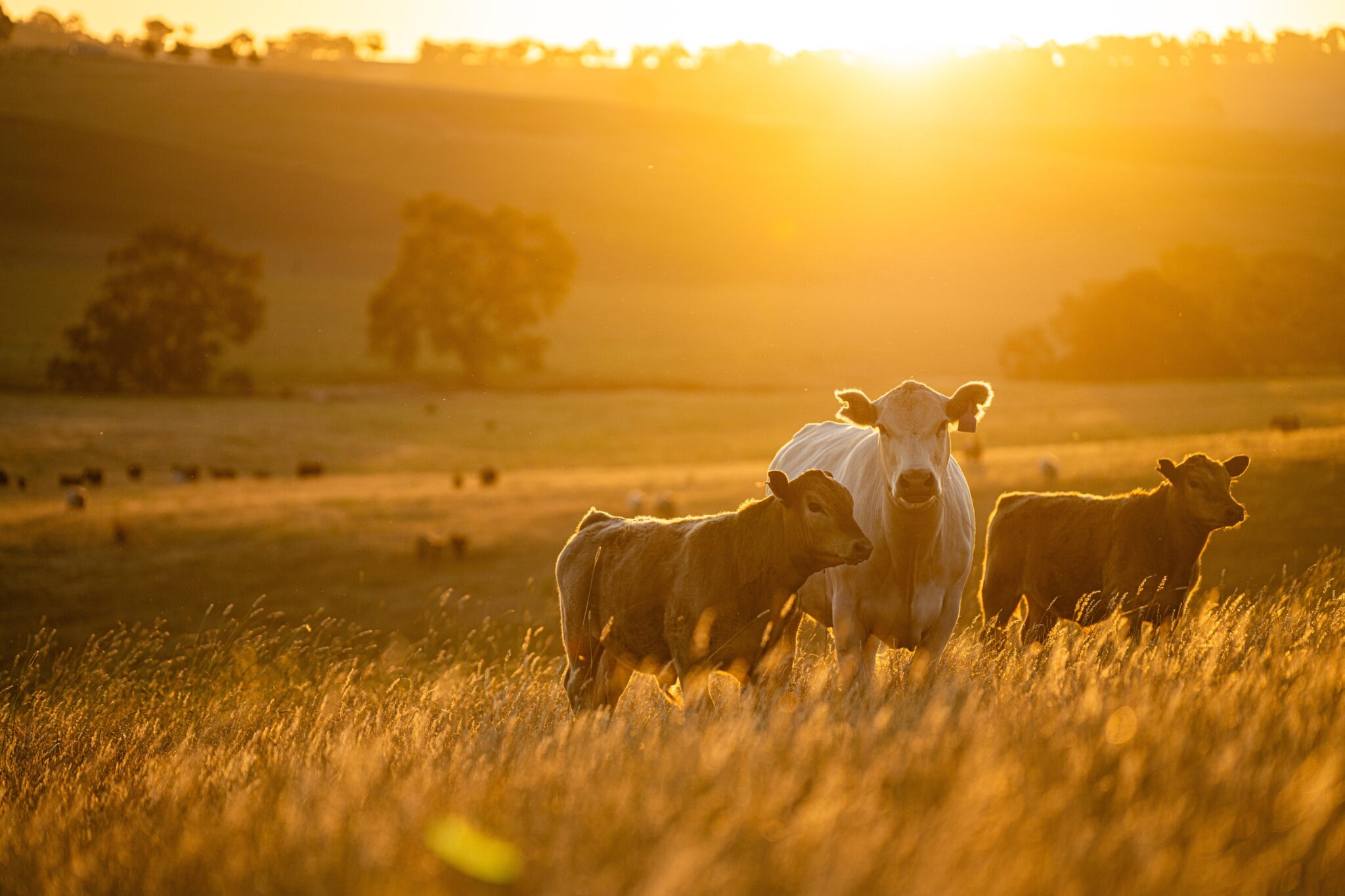Check out our latest video on the Wagyu Traceability Number and what it tells you.
Why is Japanese Wagyu Different?
In most contexts where you see “wagyu,” the word is misused. Marketers oftentimes sell meat from certain American and Australian cattle as “wagyu” to boost its price, but such cattle have very little in common with their true Japanese counterparts.
Japan Wagyu is superior in taste, texture, and health benefits because of their:
At Wagyu Sommelier™, we specialize on Japanese Wagyu.
All references to “wagyu” on our website refer to Japanese Wagyu only.
Definition
The difference of Japanese Wagyu begins with its definition.
Wa (和) = Japanese
Gyu (牛) = Beef, beef cattle
So the word Wagyu literally translates to Japanese Beef.
Marbling
Japanese Wagyu cattle are genetically more marbled than any other cattle breed in the world. Many have seen Wagyu ratings such as A5 and B4, with the higher number generally indicating more marbling. Details on the traditional rating system can be found here. The highest marbled rating in the U.S., USDA Premium, has about the same level of marbling as a Japanese A3 or lower.
It is not only about the amount of fat, the even distribution of fat among the red meat is equally, if not more, important. The Japanese use the word “Shimofuri” to describe a finely marbled piece of Wagyu, the idea being the intramuscular fat should be so intricate as appearing similar to be covered by a thin layer of frost (shimo).
The fine marbling of wagyu creates a texture akin to fatty tuna or foie gras – silky, supremely tender, but with structure.
Wagyu-ko
Wagyu-ko = the flavor and scent unique to Wagyu.
Although each breed and brand of Wagyu has its own characteristics, generally speaking, Wagyu has a higher level of detectable scent and exhibits a flavor profile that is richer and sweeter than other beef. Thanks to the high content of five types of lactones in Wagyu, it often exhibits a pronounced taste of peach and coconut. Its fat contains more organic compounds that bring out the richness of butter and hints of green plants such as apples, pears, citrus, and even lemongrass.
When cooked, Wagyu releases a complex flavor that is intensely beefy and nutty, often with a caramel note.
Low Melting Temperature
The magic of Wagyu is not only in the amount of fat but also the quality of fat.
In Wagyu, the SCD gene is particularly well expressed. This gene produces an enzyme called delta-9-desaturase, which converts saturated stearic acid molecules into monounsaturated oleic acid. As a result, Wagyu fat has a much lower melting temperature. It easily melts in your hands (and of course your mouth) when raw. If you leave a piece of Wagyu on newspaper at room temperature, you can see through the newspaper in 15 minutes.
Quality over quantity
Many farms have their own original recipes of the feed, which may range from an all-Japanese ingredient diet to incorporating herbs, olives, fruit, and other regional delicacies in the diet.
An average Wagyu farm in Japan has only 54 cattle. The Wagyu farmers adopt a “quality over quantity” approach and pay individual attention to each animal. This ensures the fostering of happy animals with little or no stress. Wagyu cattle have lots of outdoor access. Even when the cattle “go home,” they never experience the stench that is commonplace in an American industrial cattle ranch with tens of thousands of cattle. Instead, most Wagyu sheds smell like fresh flowers and sweet greens.
At Wagyu Sommelier™, we use “vintage” to show the age of a cow when it is turned to meat. A cow with an older vintage has more time to grow and develop a fuller flavor profile, but raising a cow longer necessarily increases the cost and risk.
The average vintage of beef cattle in the US is around 20 months, in Australia about 18 months, whereas the vintage of Japanese Wagyu is frequently 30 to 36 months, sometimes even over 40 months.
With the Wagyu Traceability System, you know the exact vintage of each Japanese Wagyu heifer or steer.
Traceability & Quality Assurance
Each Wagyu comes with a 10-digit number giving you every detail about the specific animal, including:
- Date of birth
- Gender
- Mother’s traceability number
- Breed
- Name and location of the farm
- Date of each transfer of location and the slaughter date
- Name and location of the slaughterhouse
The traceability system guarantees the authenticity of the Wagyu and provides information on how the piece of meat in your hand is raised and handled every step along the way.
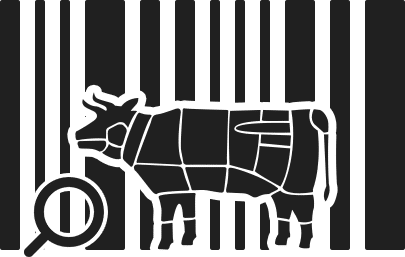
Health Benefits of Japanese Wagyu
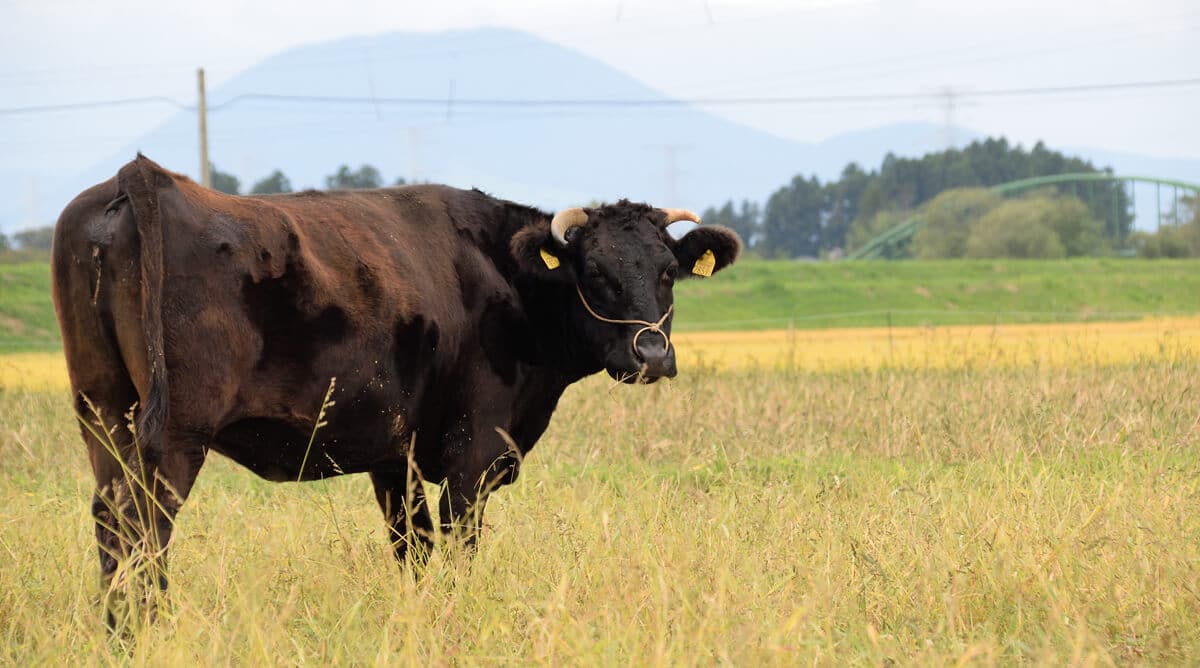
Japanese law prohibits the use of growth hormones and limits the injection of antibiotics in cattle.
Japanese Wagyu has higher proportions of monounsaturated fatty acid (MUFA) due to higher concentrations of oleic acid (the stuff found in olive oil!). MUFAs have little effect on total cholesterol. They are heart-healthy dietary fat because they can lower low-density lipoprotein (LDL)-cholesterol (bad cholesterol) while increasing high-density lipoprotein (HDL)-cholesterol (good cholesterol). With an oleic acid concentration level of 52.9%, Japanese Wagyu contains 13.1% – 20% more oleic acid than Augus, and more oleic acid than even most types of vegetable oils.
Japanese Wagyu Breeds
Japan defines “Wagyu” as one of the following 4 breeds or a mix among the 4 breeds. Only an animal whose blood comes 100% from one or more of these 4 breeds and is raised in Japan can be called “Wagyu.”
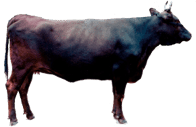
Black-Haired Japanese Cattle
黒毛和種 Kuroge Washu
Approximately 95% of Wagyu raised and fattened in Japan today belong to this breed. Fine webs of marbling are found even in its leanest cuts. The flavor of the fat is sweet and exquisite, with a buttery, tender texture that dissolves in your mouth.
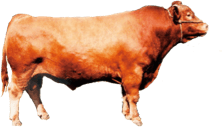
Polled Japanese Cattle
無角和種 Mukaku Washu
The Polled Japanese Cattle has a high content of lean meat and a distinctive Wagyu taste. It contains a high percentage of amino acid and boasts a rich, meaty flavor, as well as a structured texture. The population of Japanese Polled is the smallest of all four breeds with only several hundred remain in existence today. This breed can only be found in Japan.
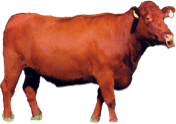
Brown-Haired Japanese Cattle
褐毛和種 Akage Washu
Also known as “akaushi (aka =red; ushi =cattle),” the Japanese Brown is raised primarily in Kumamoto and Kochi Prefectures.
The Kumamoto line is more common and is generally larger than the Kochi line. The Kochi line has fewer than two thousand in existence and is only found in Japan.
They can be distinguish by the dark spots on their noses and feet. One of their characteristics is the low fat content – approximately 12% or less. The fat is finely textured and non-greasy. Because this breed contains more lean meat than the black-haired breed, its red meat flavor and pleasantly firm texture are highly enjoyable.
This breed has been attracting a great deal of attention thanks to its refreshing and mild taste.
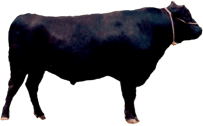
Japanese Shorthorn Cattle
日本短角種 Nihon Tankaku Washu
The Japanese Shorthorn is raised mainly in the Tohoku Region, especially Iwate. Its meat contains mostly lean meat and low fat content, and has a mild and savory flavor. It is famous for its Natsuyama Fuyusato rearing method, meaning the cattle is pastured in summer and fed indoors during the winter.
During the pastured periods, natural mating occurs. The meat of this breed contains high levels of inosinic acid and glutamic acid, which are substances that enhance the flavor and build protein in the animals. Japanese Shorthorn are only produced in Japan.
Wagyu Brands
There are more than 150 brands of Wagyu, each with its own unique characteristics and taste profile. You have probably heard of Kobe Beef or even Matsusaka Beef. Those are well-advertised good Wagyu, but only two brands of Wagyu.
At Wagyu Sommelier™, we continuously research many brands and help the world’s top chefs select unique brands to pair with the concepts and ingredients on their menus, just like a good wine sommelier.
Some of the brands we help chefs procure are so rare that they are almost never seen outside of Japan!
Wagyu Cuts
Wagyu is usually divided into many more cuts to ensure texture consistency of each cut and enable diners to enjoy the subtle differences between cuts. Whether you are creating a tartare or rôti, there is a perfect cut of Wagyu for your dish.
With each cut having its own magic, a Wagyu’s body is truly a chef’s wonderland. Finding out about Wagyu cuts and innovative ways to prepare them will elevate your culinary creations to a new level.
Pairings & Inspirations
Race to Raise Super Wagyu: Will DNA Testing Be Key?
Snow-Aged Wagyu: Overrated or Underrated?
Ladies Do It Better, Even Wagyu Ladies
Kobe Bryant v. Kobe Beef: Who Was the Original?
Hidaka Wagyu: Nature-Raised Beef with a Deep, Northern Flavor
Iwate Kitakami Gyu: Light, Delicate Wagyu from Northern Japan
Furano Daichi Wagyu: Wagyu from the Heart of Hokkaido
Beni no Gyu: A Rare, Umami-Rich Wagyu from Tochigi Prefecture
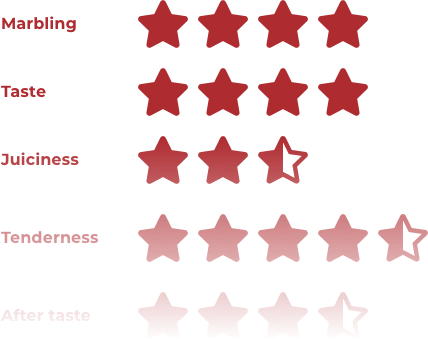
Wagyu Sommelier™ Rating System
Wagyu Sommelier™ has developed a unique system to rate each brand and vintage of Wagyu by the following elements:
- Marbling
- Flavor
- Juiciness
- Tenderness
- After Taste
For more rating information on different brands and vintages of Wagyu, please contact us.
Wagyu Sommelier™ Services
We work with chefs and restaurants globally to elevate their diners’ experiences using Wagyu.
For premium restaurants, we suggest innovative ways to take your patrons on a journey of discovery to create emotional moments they will remember for years to come.
For casual restaurants, we find cost-effective ways to incorporate Wagyu in your menu to make you stand out from the competition.
For all restaurants, our advice is tailored to your concept and our approach heavily relies on evolutionary science and food chemistry.
Contact us with any inquiries.
We partner with Wagyu producers and municipalities throughout Japan to procure hard-to-find wagyu brands and products.
Contact us with questions or special requests.
We work with chefs who want a unique and specific taste and texture profile to design their own Wagyu from scratch. Our partner farms in Japan operate on a small scale and are able to adjust the husbandry environment and rearing methods to create the one and only cow suited to your need.
Contact us to find out more.
We partner with schools, culinary institutions, and governmental entities to help design educational programs and teach students and industry professionals on Wagyu.
Contact us for more information about our programs or help with design our own courses.







